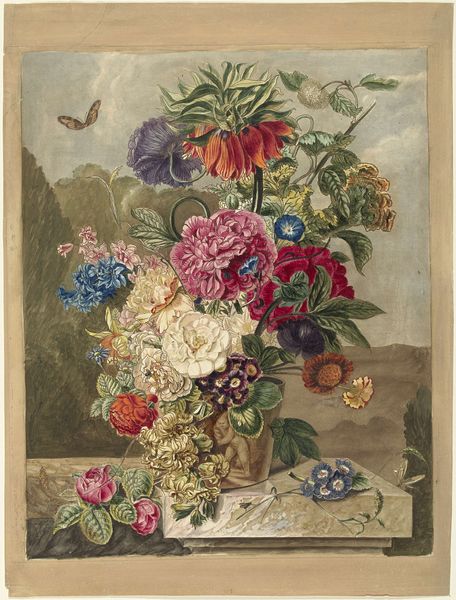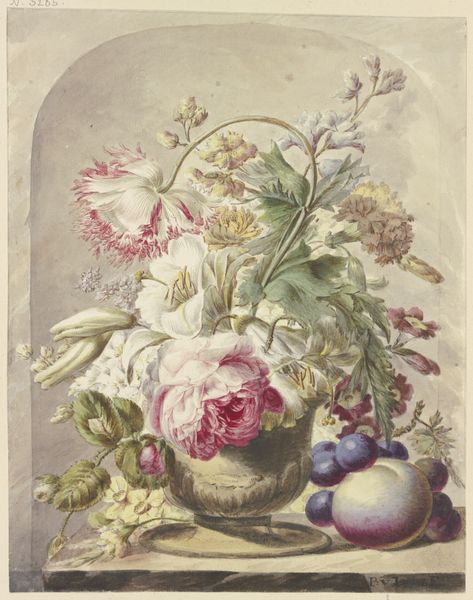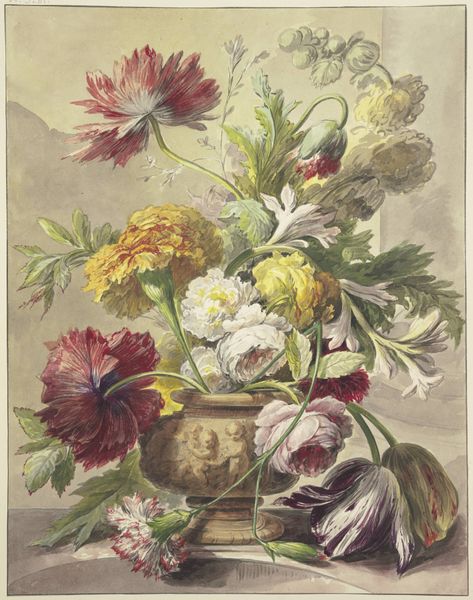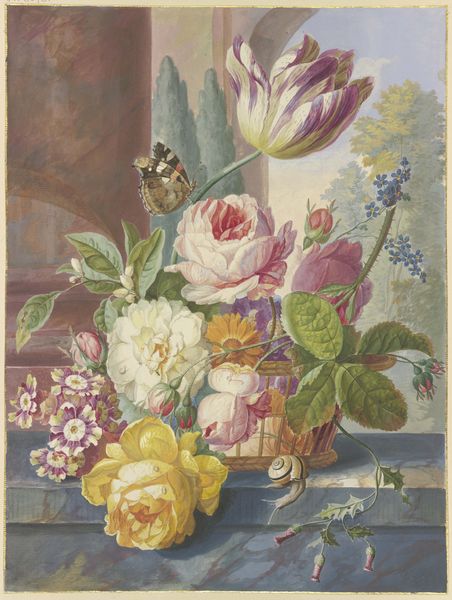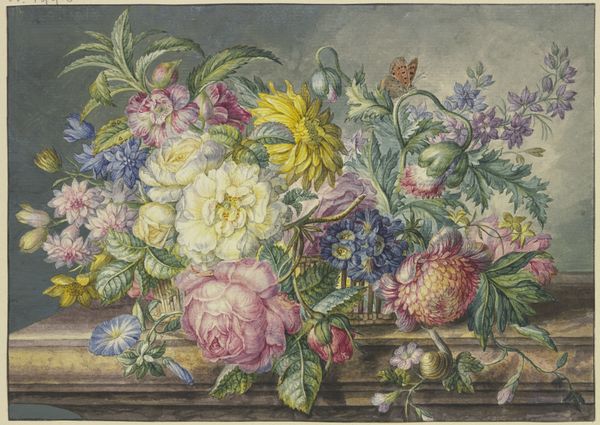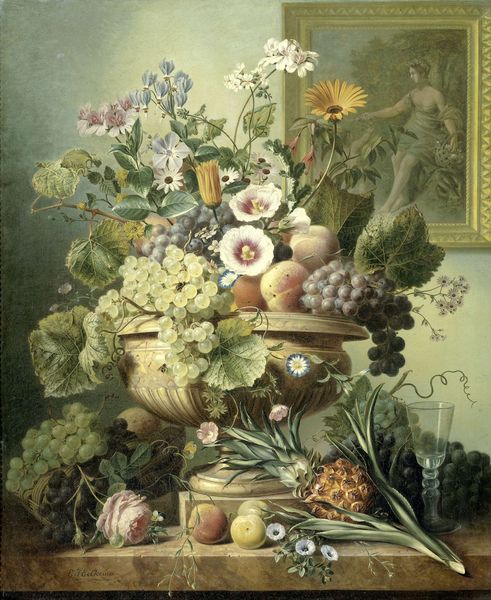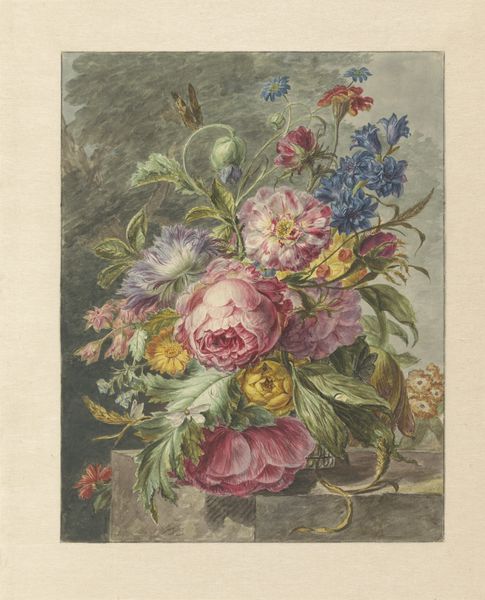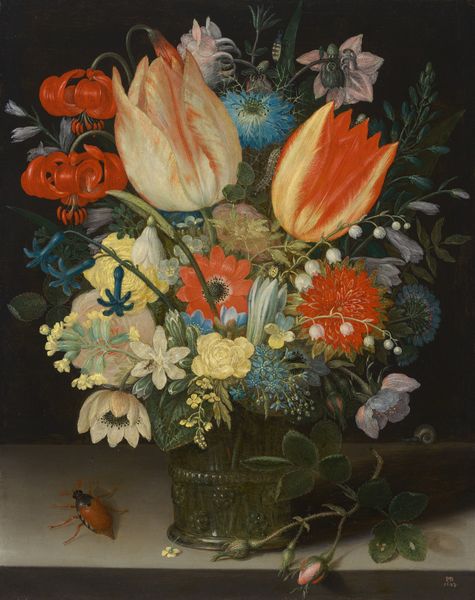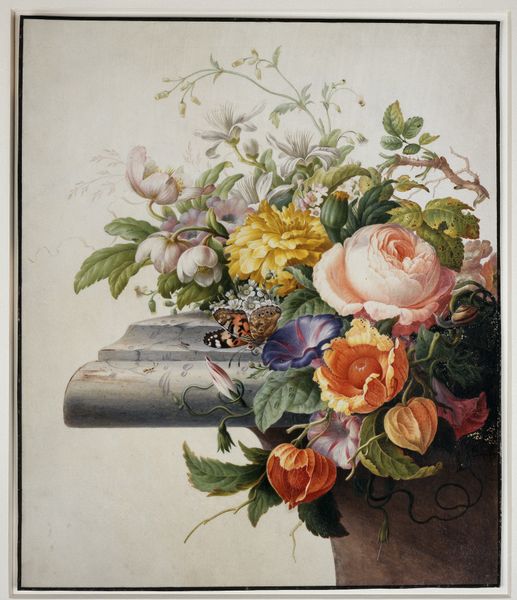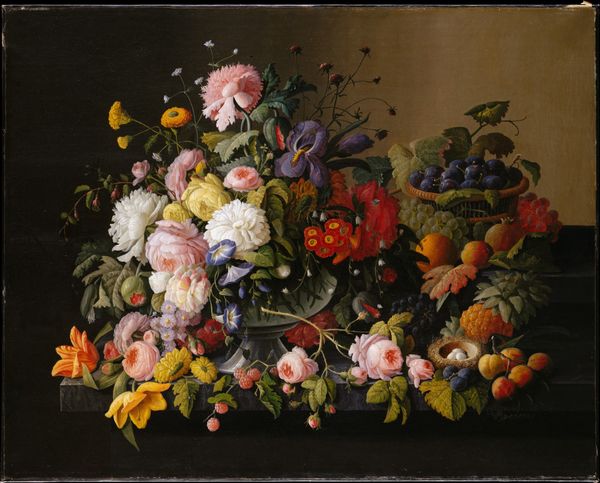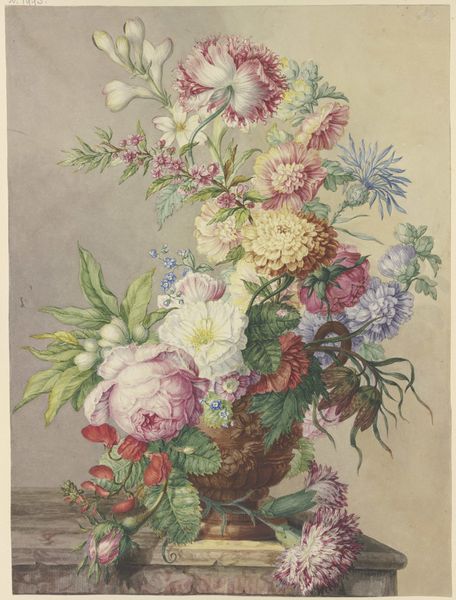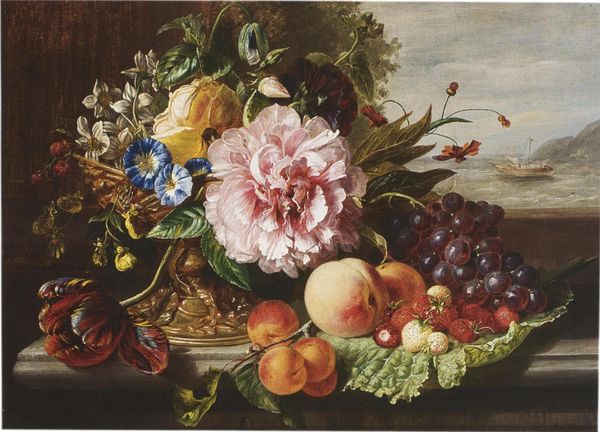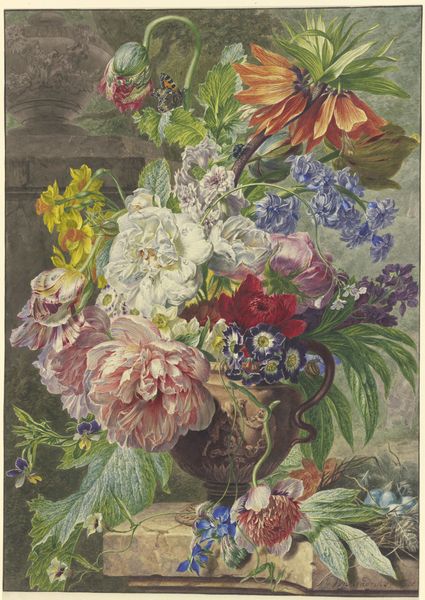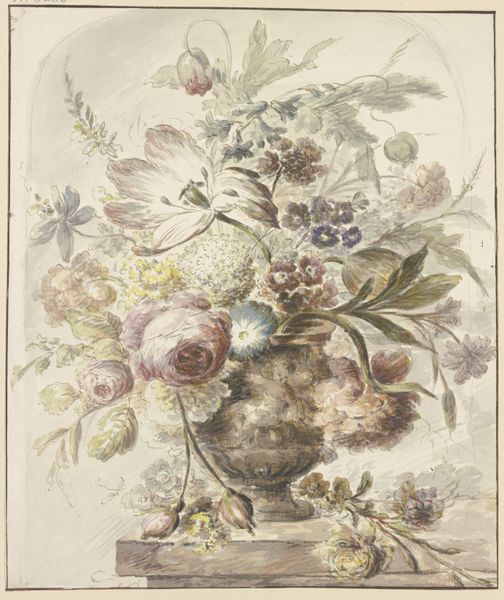
Dimensions: Image: 19 13/16 × 27 1/2 in. (50.4 × 69.8 cm) Image with text: 21 3/16 × 27 1/2 in. (53.8 × 69.9 cm) Sheet: 23 3/4 × 30 5/16 in. (60.3 × 77 cm)
Copyright: Public Domain
Curator: Look at the cornucopia of colour! What a bounty! Editor: It does have an exuberant, almost aggressively cheerful quality, doesn't it? Overwhelming even. Curator: Frances Flora Bond Palmer created this lithograph entitled "Landscape – Fruit and Flowers" in 1862. It's part of the Metropolitan Museum's collection. I see in it an idealized vision of abundance, connecting domestic tranquility with nature's bounty. The overflowing fruit and blossoms hint at fertility and prosperity, familiar symbols of hearth and home, while the open vista links interior bliss to outward opportunity. Editor: Interesting connection to the domestic sphere! I read something different in the tension between that meticulously arranged still life on the table, and the somewhat vague, generalized landscape behind it. It almost feels like a commentary on constructed identities, on the artifice inherent in creating a specific, controlled vision of "nature". Who gets access to this idealized vista, and whose labor produces the abundant fruit? Curator: That's an insightful reading. But, observe the symbolic language: the types of flowers selected and how they're rendered could be revealing. The careful rendering, though somewhat idealized, is meant to trigger collective memories related to Victorian flower symbolism, a popular trend at that time. What message is it broadcasting? I can't help thinking about continuity of values from one era to the next. Editor: Perhaps. Yet it's impossible to ignore that, at that time, class divisions deeply affected experiences of the natural world. Landscapes of abundance often obscured the exploitation upon which that abundance relied. The composition suggests a very curated sense of privilege, in my reading of this visual landscape and still-life blend. This resonates today, doesn’t it, when certain bodies and spaces are constantly at environmental risk? Curator: That intersectional lens gives me new questions to think about! Thank you for bringing a needed fresh perspective to understanding not only this print but visual history. Editor: Agreed! Together we have examined not only surface representation, but underlying codes of Victorian society. Thank you!
Comments
No comments
Be the first to comment and join the conversation on the ultimate creative platform.
